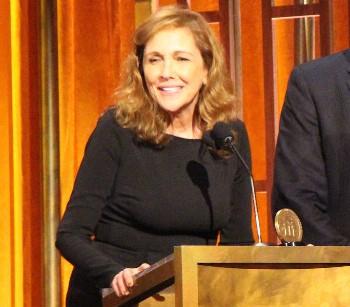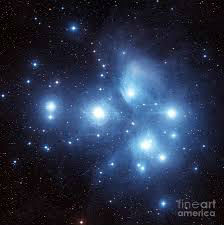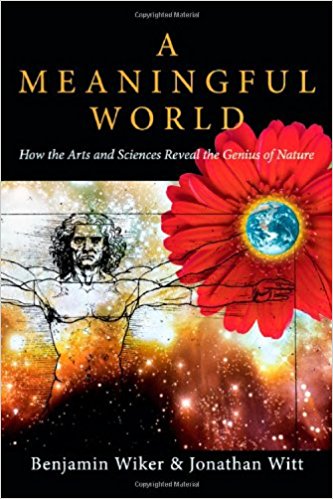Cosmos Revisited…Again
By Neil Earle
 Ann Druyan, executive producer and writer of Cosmos: A SpaceTime Odyssey, accepting the Peabody Award in 2014. Photo courtesy of Wikipedia
Ann Druyan, executive producer and writer of Cosmos: A SpaceTime Odyssey, accepting the Peabody Award in 2014. Photo courtesy of WikipediaAnn Druyan, the intelligent and articulate widow of Carl Sagan, was able to get the third installment of the famed Cosmos series on the National Geographic Channel this spring.
Based on her husband’s widely popular original series in the 1970s, “Cosmos,” is the second attempt since 2014. It is once again hosted by Hayden Planetarium’s Neil DeGrasse Tyson who has made a name for himself as a popularizer of science and allied subjects.
According to a Druyan interview in Astronomy magazine, the head of Fox Television was attracted to a new reboot when his kids were entranced by watching Carl Sagan’s original series on DVD.
It’s easy to see why. Sagan’s elegant opening is almost hypnotic in its suave buildup for what is essentially a humanistic interpretation of the universe around us. “The cosmos is all that is, all that ever was, and all that ever will be,” intoned Sagan as he overlooked a powerful scene of crashing waves and steep cliffs off the West Coast. The searching high-toned music added to the spiritual overtones of the series. This was religion, and one of the oldest, the religion of naturalism, humans bowing before the force and majesty of what Christians call the created order.
“The More Things Change…”
In 2014 Druyan and Tyson expanded into such allied subjects as biology and zoology. Cosmos 2014 integrated geology and chemistry into the presentation and featured reconstructed incidents of witch burnings and persecutions in the name of religion. This time there are short bios of some unknown scientists worth hearing about. The 2020 incarnation goes further with this anti-theist agenda, arguing in one extended clip that there is truly nothing special about human beings such as a “soul.” There is a noticeably dismissive tone when questions of purpose and meaning are discussed.
The real problem is that this second reboot is, in spite of some noble gestures towards the original, somewhat over-produced, in the words of entertainment executives. There are times when the video (the “pretty pictures”) overwhelms the thread-bare narrative – a predictable trap for scientific shows. Some episodes are stronger than others. The night when Tyson devotes half an hour to explaining the “dance of the bees” as a parable of telecommunications outside the human realm draws one in but paradoxically evokes much of the old Moody religious programs from the Bell and Howell-era 1950s clicking away in church basements. Those shows pivoted on Romans 1:20, a classic text for those who reference the marvelously complex world about us as evidence of a Creator’s handiwork.
It is unlikely that Druyan and Tyson have heard of these early Christian ventures into media, but this is not a fatal criticism by any means. They know what they are about. An April 13 episode was a lay sermon on the dangers of climate change sketched from the earliest days of primeval humans generating smoke to warm their mudbrick houses to the victorious fight to heal the Ozone Layer in the 1980s. Many Christians will not feel at home in this series, but I have learned over the years to extract some lessons even from these sideways attacks on the Faith. It begins with the metaphoric “lens and camera angles” one adopts while viewing grandiose images and special effects that makes Cosmos worth watching.
For example: The beetle species that bewitched Tyson in another episode was already touched upon in that dated but pioneering Christian stalwart from 1959 (first edition) titled Why We Believe in Creation Not Evolution. Given that there are more than 250,000 species of beetles on earth (not counting the rock band from the 1960s!) the quote from an ornithologist that God must have “an inordinate fondness for beetles” is another tongue-in-cheek way to view the evidence. They, not us, are the most numerous life forms on the planet. Christian writer Ernest Kofahl’s 1959 excursus on the Bombardier Beetle – an insect with the skill to mix a liquid of 19% hydroquinones with 23% hydrogen peroxide to use as a bomb while lifting off from predators – this shows that study of nature or the cosmos is not limited by decades or by one’s views on the subject of a Creator God. The trick is to keep staying up-to-date. Hence the value of a series such as “Cosmos”: it shows theists what the “other side” is up to.
The Tyson Lecture
My own first-hand encounter with Tyson came on February 7, 2018 at the elegant Orpheum Theater in Memphis, TN. That night “the people’s astrophysicist,” offered us ten things we should know about the universe – delivered in his usual jocular, entertaining style.
Tyson did not disappoint his jam-packed audience. Many were children as young as nine years old and eager they were to hear their hero help lead them into a possible career in science. My wife and I were there because I am one of those who see both Sagan and Tyson as excellent “dialogue partners” for Christian journalists such as myself who are convinced that the cosmos is indeed a source of endless wonder and a living marvel, a stage set for the biblical drama of Redemption. In some ways science has half of that story and Tyson’s pot-shots at religious fundamentalists are, in some cases, deserved.
But it is possible for even a non-scientifically educated Christian (such as myself) to offer alternatives to all of Tyson’s ten points. Here are the key ones I noted.
 The Pleiades mentioned in Job 38:31.
The Pleiades mentioned in Job 38:31.
*Tyson: “The universe has a boatload of stars.” The latest estimate is one sextillion stars in the known universe, that’s 10 to the power of 21. There are actually more stars than there are grains of sand on earth! That’s a lot. Later Tyson quoted 100,000,000,000 stars in our galaxy, a number that hadn’t changed I was glad to hear since I first read it in the 1960s and preached and wrote about for 45 years. No problems for Christians who cherish Isaiah 40:26, “Lift up your eyes on high and see who created these? He who brings out their host by number.” He calls them by name says Isaiah and sure enough Orion and the Big Dipper and the Pleiades are all cited in Scripture, in the very ancient book of Job. The greater the Cosmos (if you choose) the greater the Creator.
*”The Universe is bad for your ego.” This was his longest point. As late as the ’60s, Tyson claims, biology books were published showing a “Tree of Life” with white male humans at the top of the tree. (The audience tittered.) Now the tree looks like a spiral with nothing definite at the center but faint indentations fanning out along the circumference. Humans are placed next to Mus Musculus (“Mice”) which is why experiments on mice are conducted to test theories (more laughter). “Our urge to feel special, focuses on difference,” Tyson added, “But we are actually part of a great unfolding ecosystem.”
Lack of any human “specialness” is a key Tyson theme. The April 13, 2020 TV episode scoured the earth showing there was nothing about humans that made them special. All species have those who make tools, show love and sacrifice, and plan in advance. Yet no big clash here with Bible verses such as Psalm 8 and Isaiah 41:14 that talk about our low status in comparison to the Creator. In fact Proverbs 6:6 specifically counsels us, “Go to the ant, you sluggard” who prepares her meat in advance without supervision.
Again, a lot depends on how one chooses to interpret the evidence.
*“The Universe is a time machine.” Hubble telescope teaches us that light from the moon takes 1.3 seconds to reach us. That means we are seeing things as they were 1.3 seconds ago. In Orion we see stars that have been born in explosions but we presently see them as they were eons ago. Orion happens to be mentioned in the Bible three times (e.g. Job 9:9) so no big deal here for any Christians who do not subscribe to the 6000 year old creation.

*“Earth…wants to kill us!” Tyson’s natural humor and kinetic gestures lightened up this section in his Memphis talk. Killer asteroids, comet impacts, earthquakes, tidal waves – “these are not good for our health.” Thus, “when we speak of the Good Earth we are speaking of that small minority of the surface that is habitable.” This is a great point for Christians to ponder. Yes, there are spectacular sights – the Rockies, the glaciers – but no one wanted to be around when those were being made! “There have been more species rendered extinct on this planet (97%) than exist today,” says Tyson. This is a sobering fact that climate change activists rightly present but it can also be seen as fitting within the Biblical grid of “guided catastrophism” reflected in numerous texts such as Isaiah 13:9-13. Stuff happens.
*“Earth might not be the home of life.” Tyson introduced the term “Panspermia” which refers to the theory that life on earth could have come from elsewhere. “Crashing asteroids will fling rocks into space that can carry microbes.” He reminded us that in 1984 a rock found in Antarctica contained microbes that were only identified when NASA reached the lunar surface. President Clinton casually announced this on August 7, 1996 – “we have evidence that microbes travelled from Mars to Earth.”
This is all very fascinating but a Mars meteorite or two does not a complicated species make, at least not yet. Tyson would probably admit that an open-minded investigator would see this as inductive evidence only – speculating from miniscule bytes of evidence to build a theory and not subjecting the data to the rigorous proof that is a hallmark of the scientific method.
*“Life is of the Universe.” In true stately Sagan style Dr. Tyson began to build to his climax. Of six essentials the Universe needs to make life, five of them are here on earth. Helium is missing as a human component because “it has a tendency to blow things up.” “We are made of the most common elements in the Universe and they’re the same in every galaxy,” Tyson intoned, “We are cosmically connected…chemically.” And the Universe is of Life. “All life comes from 92 elements forged in the stars and life is built up slowly from exploding stars which belch constituents of gas exploding out across the universe,” he explained. “The nitrogen and oxygen from exploding stars is one way to enrich other gas clouds empowering the next generation of life.”
Hmm. A wee bit speculative is it not?
A Curious Hunt for Relevance
What is intriguing is the Sagan-Tyson school’s need to inject some sense of purpose or meaning in what we see around us, even if on a humanistic level.
Tyson’s Point Number One which he had to rush through but comes out as the Universe has given us the gift of relevance, of cosmic belonging. “I’m here. I belong. Not only am I in the universe, the universe is in me.” Here is an attempt to forge a satisfying conclusion for believers in strict materialism. Christians will reply that for one species to be made in God’s image – the theological not the geological message of Genesis 1 – this gives us all the relevance and meaning we could possibly desire.
In the end, Tyson’s presentation was more an entertaining update than a hard-core science lecture but the children in the audience seemed to be impressed. Good. A sense of awe and wonder engendered this early can lead to some surprising developments later.
In the end we all benefit when both science and religion keep open minds as they engage each other. Science writer John Bell writes that “we have reached the end of human capacity to form a sharp picture of what is going on,” when it comes to the Universe. Hence the need to escape the dilemma through Mars rocks and exploding gas clouds or the Mutiverse Theory.
The “multiverse” is all the rage in physics today. This reconstruction sees our whole universe encased in some kind of cosmic bubble next to other universes. “Logical, since the universe doesn’t do things in one’s,” say Tyson. (This takes on overtones of earlier cultures myths of the original “cosmic egg.”) Rather than make us feel insignificant, says Tyson, “all of this should be seen as our being participants in the universe.” This hopeful Sagan-like note accomplishes two things. It answers the accusations of meaninglessness that ultimately plague humanistic science or the fact that physics may be out of ideas on the subject of Origins. (Quantum supposition phenomena are another subject.)
Many Christians maintain that “the One who calls all the stars by name” did the original creating (Isaiah 40:26) but he hasn’t shown us how. He has the flow charts but encourages us to seek them out (Proverbs 25:3). So let the dialogue continue. This way we can live in peace while appreciating the efforts of the “Cosmos” team.
(Neil Earle is an internationally known Christian journalist. His website is asecondlook.info.)